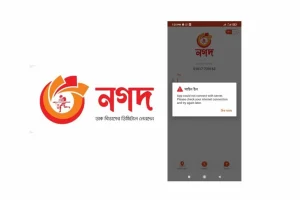In the hyper-connected world we live in, personal data has become a form of currency. From medical records to financial transactions, we generate tons of sensitive information through our daily online activities. This data trove represents a goldmine for hackers and malicious actors of all kinds.
To combat this, robust cybersecurity measures are more important than ever. However, the old model of “castle-and-moat” security no longer provides sufficient protection. This traditional approach operates on the assumption that anything inside the perimeter is trusted by default. In today’s threat landscape, that’s a fatal flaw.
Zero Trust: Rethinking Data Security from the Ground Up
Zero trust flips the script on cybersecurity by fundamentally changing the underlying philosophy. Instead of assuming that people or systems inside the network are automatically trustworthy, zero trust mandates continuous verification of every access attempt. No one is trusted by default – period.
This translates into tangible practices:
- Multi-factor authentication (MFA) becomes non-negotiable, requiring additional verification like biometrics or one-time codes on top of passwords.
- Least privilege access policies only provide the bare minimum permissions needed for someone to do their job.
- Micro-segmentation and compartmentalization divides digital environments into smaller secure zones that require separate authorization to access.
- Pervasive monitoring, intelligence gathering and analytics tracks all user activity and network traffic to identify abnormalities that could indicate foul play.
In essence, zero trust assumes breach and pragmatically limits potential damage through identity verification, granular access controls and constant vigilance. It’s a dramatic shift from the days when gaining network access meant gaining inherent trust.

Building a Personal Zero Trust Fortress
While zero trust is often seen as most relevant for large enterprises, individuals can also apply its principles to safeguard personal data from modern cyber threats. Here are some practical steps you can take:
Enable Multi-Factor Authentication Everywhere Possible
MFA does add friction, but it provides exponentially higher security. Use it to protect email, social media, financial accounts and any other sensitive services. Popular MFA options include SMS text messages, authenticator apps and biometrics like fingerprints or face recognition on mobile devices. The minor hassle is worth preventing unauthorized access.
Commit to Strong, Unique Passwords
Despite their drawbacks, passwords remain one of the most common authentication methods. Creating long, complex passwords with a mix of letters, numbers and symbols significantly improves security. Every account should have its own randomly generated password stored in a trusted password manager app.
Lock Down Your Devices
Keep all phones, tablets, laptops and computers up to date and protected. Enable device encryption, strong screen locks, remote wipe capabilities in case of loss or theft and security software to block malware infections. It’s also wise to avoid accessing sensitive accounts over public Wi-Fi.
Minimize Shared Personal Data
Be extremely selective about what personal information you make publicly available online. Prune old social media posts, limit app permissions that access contacts or location data and avoid oversharing birthdays, addresses or other details that could facilitate identity fraud.
Leverage Encryption for Critical Data
Whenever especially sensitive documents like tax returns or medical records need to be digitally stored or transferred, use encryption to scramble the contents. This prevents unauthorized parties from accessing the information even if they manage to intercept the file. Popular encryption options include VeraCrypt containers, encrypted archive formats like ZIP and 7ZIP, encrypted external drives and encrypted cloud storage platforms.
Zero Trust: A Shared Responsibility
While individuals must be vigilant about personal cyber hygiene, data security is also a collective effort. We need to demand credible privacy practices and security measures from any business or service collecting or handling our information.
Governments also play a crucial role by developing and enforcing strong nationwide data protection laws with real consequences for non-compliance. Without these external pressures and accountability mechanisms, companies rarely prioritize security on their own.
Conclusion
Zero trust security represents a dramatic shift in philosophy from the outdated castle-and-moat model that still plagues data protection strategies today. By taking a pragmatic, risk-based approach grounded in continuous verification and tightly controlled access, zero trust principles allow both individuals and organizations to build true digital fortresses.
In the hyperconnected world we inhabit, vigilant personal data security hygiene is no longer optional – it’s a basic necessity. Zero trust presents a path forward, giving you the tools to take back control and lock down your own data fortress one brick at a time.
















Add Comment